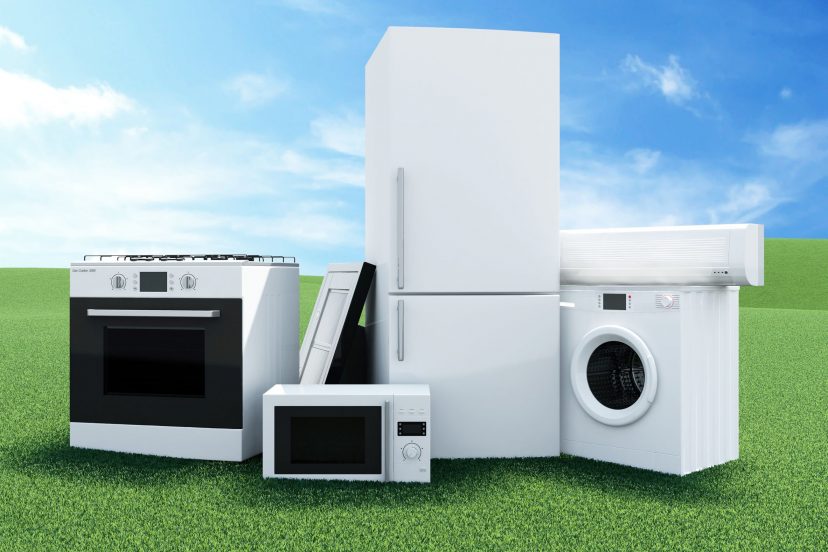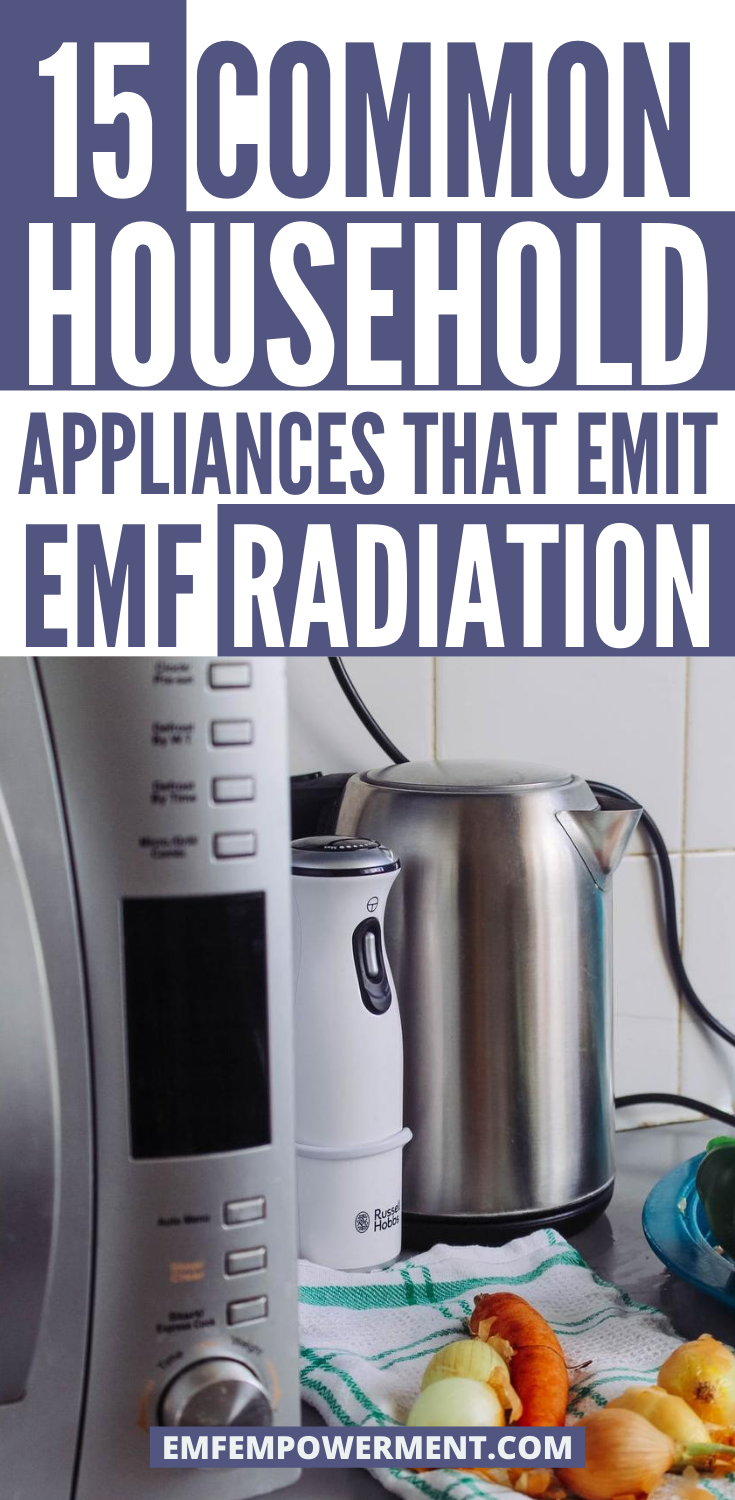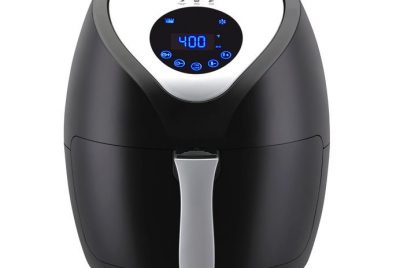On April 3, 1973, the first mobile phone was created. Since then, cell phone technology has…
15 Common Household Appliances That Emit EMF Radiation

*We may earn a commission for purchases made using our links. Please see our disclosure to learn more.
Have you ever wondered how much EMF radiation your stove emits? What about your microwave?
Every appliance in your home emits some level of EMF radiation. Familiarizing yourself with the numbers can help you make better decisions to keep you and your family safe. In this guide, we’re going to talk about EMF levels for several common household appliances, and what you can do to lower your exposure.
Average radiation levels of common household items and appliances
In the chart below, we give average radiation levels for 15 appliances and items. Note that these levels are average — your actual levels may vary, based on the model of appliance and even the amount of distance between you and the item while it is in use. We’ll get into how to measure your own appliance’s levels a little later.Appliance Radiation Level Distance Hair dryer 60-200 mG 1 inch Cell phone 1.6 W/kg No separation Wireless router ~1.4 W/kg 5 millimeters Microwave 5.5 mG 3 feet Dishwasher 0.6-3 µT 30 centimeters Vacuum Cleaner 2-20 µT 30 centimeters Toaster 3.8 mG 1 foot Refrigerator 1.5 mG 1 foot Oven (electric) 0.15-0.5 µT 30 centimeters Washing machine 1 mG 3 feet Clothes dryer 1 mG 3 feet Laptop computer 0.5-30 µT 1 foot Tablet or iPad ~1.19 W/kg No separation Can opener 115.5 mG 1 foot Fluorescent light bulb 1.15 mG 3 feet
Breaking down the numbers
There are a few things to note about the above chart. For one, there are three different units of measurement used.
- W/kg or watts per kilogram. This unit of measurement is primarily used when talking about RF-EMF radiation. It refers to the amount of radiation absorbed per kilogram of tissue.
- µT or microtesla. A microtesla is a unit of measurement used for magnetic fields. When you see this unit next to a number, it means the appliance produces a detectable magnetic field.
- mG or Milgauss. Also used to measure magnetic field density, mG is simply a larger unit of measurement than a µT.
Secondly, each measurement is taken at a different distance. This is because each appliance and item is used in a different manner — we tend to be in closer proximity to our cell phone, for example, than our washing machine at any given moment. The distances listed above are typical distances for when each appliance is in use.
It also bears repeating that your actual levels will differ from this chart. Each model of cell phone is going to emit a different level of EMF radiation, although, in theory, every model should fall below the 1.6W/kg limit set by the FCC. The same is true for tablets, wireless routes, and really every other item on the list.
Measuring EMF levels in your own home
With that in mind, you may be wondering how you can measure EMF levels for appliances in your home. If you have an EMF meter, all this will take is a little time and record keeping. And if you don’t already have a meter, we recommend picking up the Trifield TF2. This is a reliable and highly trusted meter that is worth the investment. If you have a smaller budget or are just looking for other options, however, you may want to visit our guide to EMF Meters for Any Budget.
Now, to start, pick the first appliance you want to measure. For this example, we will use a refrigerator. Take the measurement at the distance you typically stand from the fridge while browsing inside of it. Since the door is usually open when you are using the fridge, you’ll probably want it open here, too — you could even take the measurement with the door closed and with it open for comparison’s sake.
Next, unplug the appliance. Repeat the measurement in the same location, and note how the reading changes. You could also do before-and-after measurements at various distances throughout your kitchen to see how that specific appliance affects the overall room’s levels.
Do this process for each item in your home you wish to take a measurement of. This will give you an idea of what items are high-EMF producers, and how far away you should try to stay from these devices.
Tips for protecting yourself
There are many things you can do to lower your home’s EMF levels and protect yourself from this harmful form of radiation:
- Practice good cell phone safety habits. Cell phones are huge producers of EMF radiation. Fortunately, there are several things you can do to reduce your exposure to them. Investing in a good quality EMF protective case, such as DefenderShield’s, that can drastically reduce your phone’s EMF output, is one great step to take. Another is to turn your phone to airplane mode when it’s not in use, and always try to maintain as much distance as possible between you and the device.
- Unplug your microwave and other easily accessible appliances when not in use. Microwaves, coffee makers, toasters — these items all produce small amounts of EMF radiation even when they aren’t in use. And sure, the amount from any one appliance is small, but when they are put together the result can be quite measurable. If an appliance is easy to access, consider unplugging it when it’s not being used.
- Find a lower EMF hair dryer. As you can see from the chart, hair dryers produce a great deal of EMF radiation when close to the source. This is less than ideal, given that a hair dryer must be in fairly close proximity with your head to be effective. The Chi Pro Low EMF Hair Dryer is one excellent option for those looking for a lower-EMF alternative that still has a bit of power.
- Stand a safe distance away from all appliances while using them. Once you’ve gone through and measured EMF levels for most of the appliances in your home, use that data to make safer choices. If you know how far you need to stand away from the microwave to stay within a safe exposure range, then be sure to do that.
- Use a non-electric can opener. Perhaps because of the amount of power required, electric can openers generate a serious amount of EMF radiation at a one-foot distance. Most of the time, we use these devices in close proximity. Your best bet is to switch to a traditional-style, non-electric can opener. If that isn’t feasible, at least be sure to stand several inches away from your opener while it is in use.
- Install a WiFi router guard. If you use WiFi, your router is no doubt producing EMF radiation, especially if you are standing near it. One thing you can do to reduce this is to install a WiFi router guard. These are Faraday Cage-like devices that help reduce the amount of radiation your router leaks into the atmosphere. We recommend the JJ Care WiFi Router Cover For other options or to learn how to make your own, check out our guide to WiFi Router Guards.
Parting words
Many modern appliances make life more convenient and comfortable. These appliances also emit EMF radiation, however, which has been linked to cancer and other serious health issues. Taking steps to protect yourself and lower your home’s levels can allow you to co-exist safely with the electric appliances in your home. 



